High kit prices and falling profits pinch contractor margins
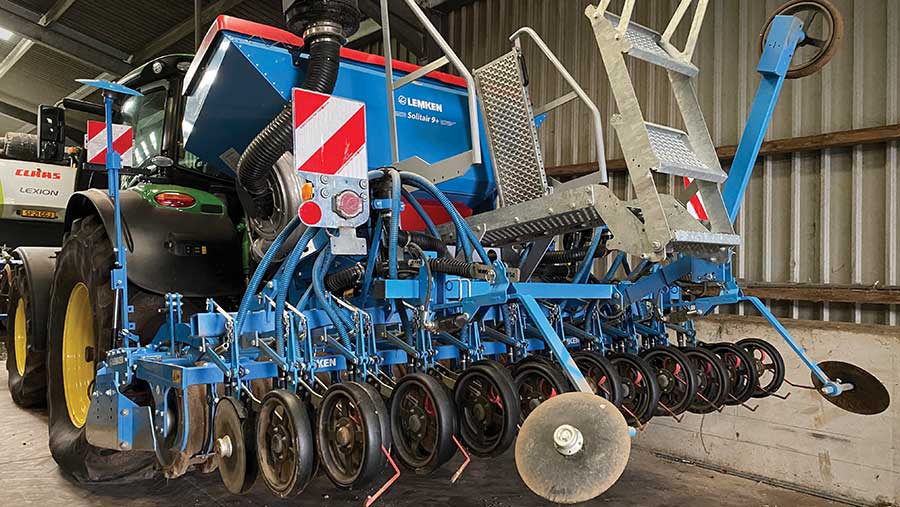 All revved up and nowhere to go – work is on hold until fields dry out © MAG/Oliver Mark
All revved up and nowhere to go – work is on hold until fields dry out © MAG/Oliver Mark The rains and winds of Atlantic depressions Isha and Jocelyn may have wreaked short-term havoc, but two metaphorical storms are causing South Lanarkshire contractor Jim Watt greater angst.
Squeezed on one side by soaring machinery costs that continue to nibble away at profit margins, and on the other by cash-strapped customers unable to accommodate price rises, he has found himself stuck in a financial rut.
See also: Claas Jag 980 a success but silage lurches from perfect to painful
About the contractor

Jim Watt runs a 2,500ha silage, slurry and arable contracting business in East Kilbride
“The price of kit is frightening, and my rates can’t come close to keeping pace with costs,” says Jim.
“When I started in the early 1990s, my first self-propelled forager cost £86,000, a tractor was £25,000, trailers were £3,000 and staff earned about £5/hour. My silage rate was £69/ha.”
Fast-forward 30 years and the differences are stark. Big choppers are upwards of £450,000, his new 6R 185 cost £160,000, trailers are £30,000 and labour rates are hovering at £15/hour.
Then there’s farm and fleet insurance to add to the mix – it’s up from £4,000 to nearly £40,000 in that period.
“Granted, we have assets that are worth a lot more but, while my costs have increased at least fivefold, the silage rate – currently about £140/ha – has barely doubled.
“The only way to make up the difference, purely to stand still, is to put in more hours.
“There’s no way on earth I could charge £350/ha and find any work – the area is already polluted with self-propelled foragers, so it’s basically a race to the bottom.
“Two big outfits have recently chucked it in, and I expect there to be more.”
Jim’s solution? A Post Office-style exposé akin to the four-part television series that documented the David versus Goliath battle of sub-postmasters.
“In many ways, there are similarities with farmers trying to get fair prices from processors and supermarkets.
“It’s the only industry where producers of a commodity are told what they’re getting, not what they’re charging,” says Jim.
“It’s criminal that four postmasters took their lives over the Horizon scandal, and more so that it took a dramatisation to bring it to public and government attention.
“I’m certain that many more farmers have reached a similar point of despair in trying to make ends meet.”
“I thought that the penny had finally dropped with regards to food security after Covid. But we’re back to where we were and that has a knock-on effect on all contractors.”
New arrival
Despite the financial challenges, Jim remains determined to invest in the machinery fleet – albeit not as freely as he once did.
The one departure since our last visit is that of a 2017 John Deere 6155R, out the door on 6,000 hours for £61,000, despite needing some TLC and sporting a set of treadless tyres Lewis Hamilton would be proud of.
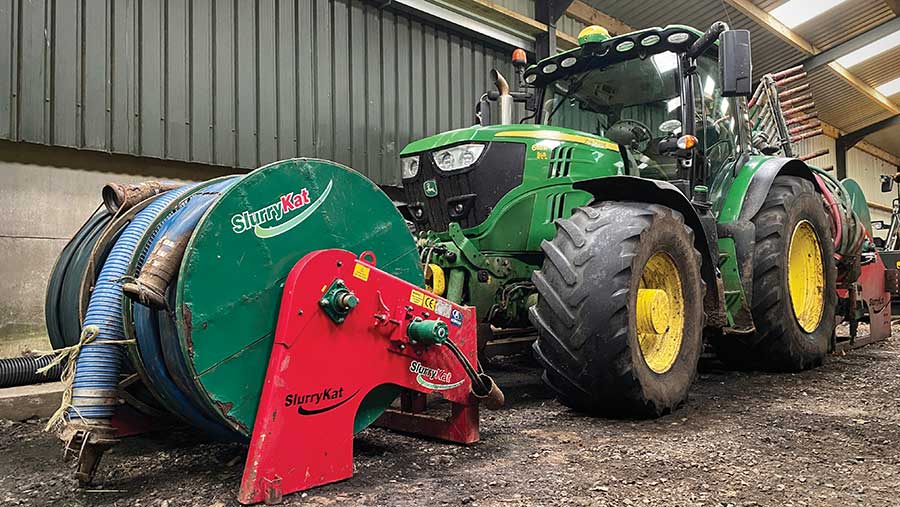
The outgoing John Deere 6155R © MAG/Oliver Mark
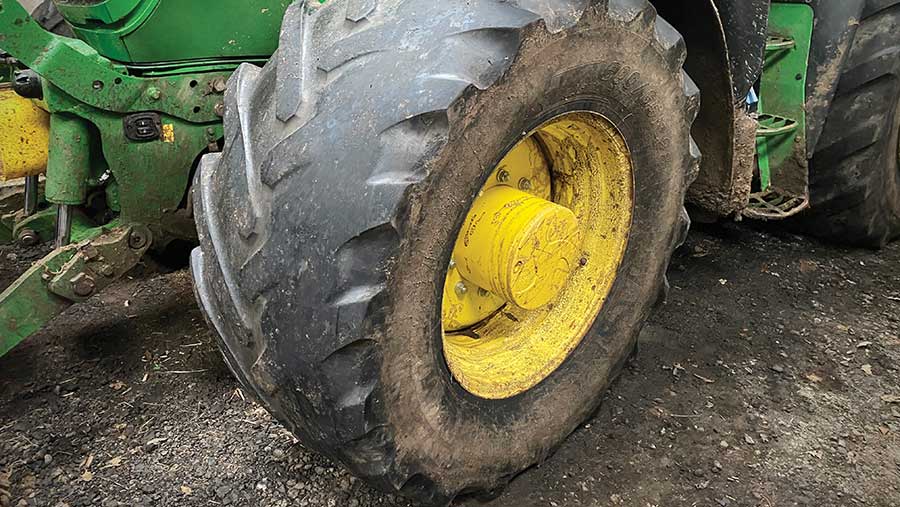
Slicks – no rubber left on the 6R’s tyres © MAG/Oliver Mark
Its replacement, due to arrive in March, is a new Ultimate-spec 6R 185.
“I could have managed with another 155, but the price difference was only about £20,000 and it should be a far livelier machine on the same medium frame.
“As the saying goes, you can always send a big man to do a wee man’s job, but you’d never send a wee man for the big stuff.”
It means the fleet is still split 50/50 between Fendt and Deere.
“I like to have a mix. Price-wise they’re similar, the John Deeres have the edge on ergonomics, and the Fendts are undoubtedly the most comfortable.
“The trade-off is the cost of Fendt’s servicing package as part of the three-year warranty deal.
“We have to stomach that for a few years, until we can bring maintenance in-house.
“Everything is that much dearer – an oil filter might be £38, when I could fit a decent MAN one for £6, and I end up having to pay another £8.75 for the accompanying O-ring when the old one is perfectly fine to reuse.”
The pair of JCB 419 shovels (2018 and 2021) could be next for the chop, with Jim currently weighing up the prospect of trading them in with a 68-plate TM320 pivot-steer telehandler, which he only bought a few months ago.
“The 419s have been superb, and watching them together on the clamp is like poetry in motion. We can have one at the top and the other at the bottom, so trailers are never left waiting to tip.”
Their potential replacements are a 435 and a TM420, which means dropping from three machines to two.
“This would leave a bit of cash in the bank, reduce servicing costs and, on pits that only require the big shovel, free up a man to cart silage.
“There’s no doubt the 435 could move a mountain, but my concern is whether it can manage a big pit on its own with five trailers piling in, and whether it’s nimble enough around the yard.”
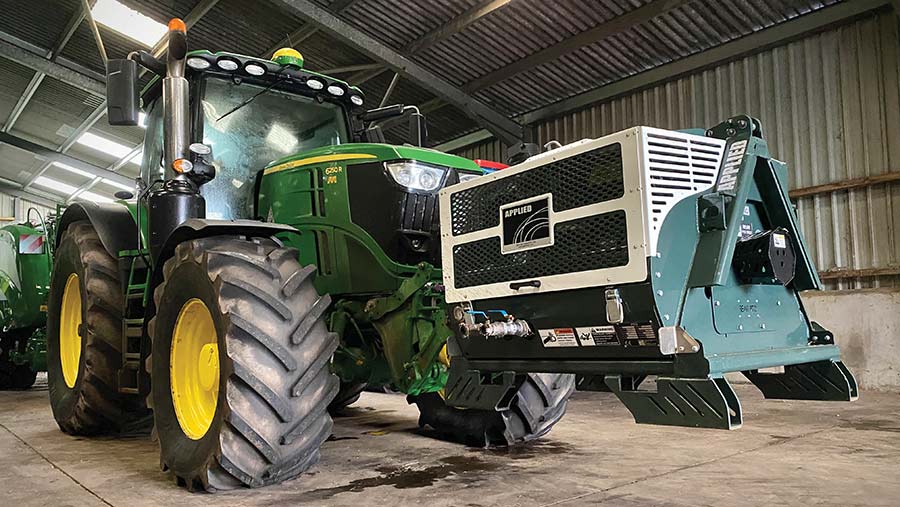
John Deere 6250R © MAG/Oliver Mark
Staff challenges
One of Jim’s primary motivations in running a new, high-spec machinery fleet is that it attracts staff, who can be hard to come by during peak periods.
“I’d love to have one Fendt and a load of Solis tractors, but we struggle with labour as it is.
“The small, local dairy farms we used to rely on to help at harvest have either given up, their staff now working in haulage or forestry, or they’ve expanded to 500 cows and have no spare time.
“That said, I was encouraged by a recent visit to the Claas UK headquarters at Saxham.
“The site used to be fairly antiquated, but they’ve invested millions in a new training complex, which suggests there is a bit of confidence in the industry.
“I was particularly impressed by the apprenticeship scheme, which is oversubscribed. Rather than having their training programmes based at colleges dotted around the country, they’ve taken it all in-house,” he says.
“Mechanics and technicians are getting older, and several in this area have recently retired, so it’s good to see new blood coming in.
“The problem, as ever, is that youngsters are full of enthusiasm until they’re wrestling with combine belts on a Saturday night and they see their pals drive past on their way to the pub.
“I liked Claas’ solution to that particular issue – apprentices are given £1,200’s worth of Snap-On tools, which they have to repay if they subsequently drop out.”
Wet and windy
At the time of our visit, the country was still reeling from the damage caused by storms Isha and Jocelyn.
They exacerbated issues caused by a soggy autumn, during which Jim managed to finish only one-third of his winter ploughing.
“Things have been even worse for growers up the east coast and, come spring, every man, tractor and dog will be on a plough.
“We had a little go during the heavy frosts a few weeks back, but it’s generally been far too wet.”
The weather has also had an effect on slurry spreading, with a 10-day spell of severely cold weather bringing work to a halt.
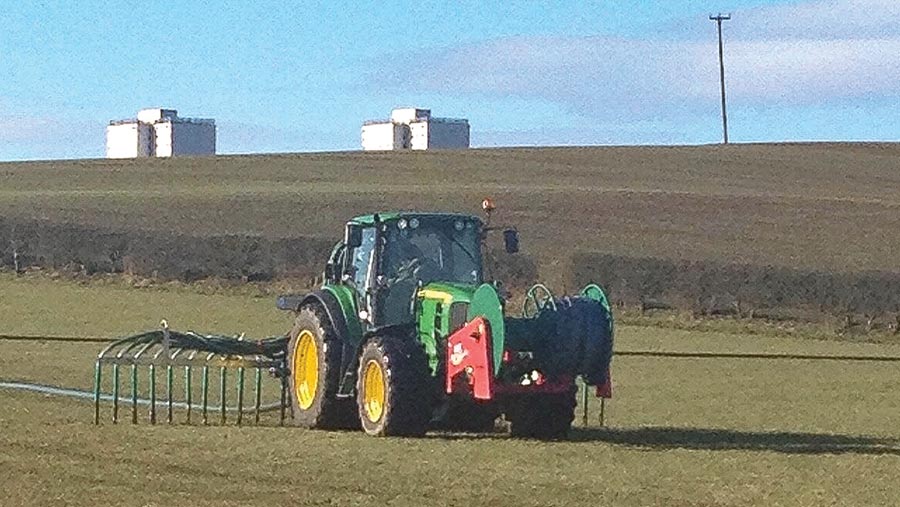
Making the most of a brief window to spread slurry © MAG/Oliver Mark
“It was down to -10C or below, which was far too cold to be pumping slurry through umbilical pipes. Instead, we caught up with muckspreading, but the storms since have put paid to that.
“That’s left the men at a bit of a short end, beyond a bit of muckspreader maintenance. In all honesty, I’d rather pay them to stay in their own houses rather than watching them kick stones around the yard.”
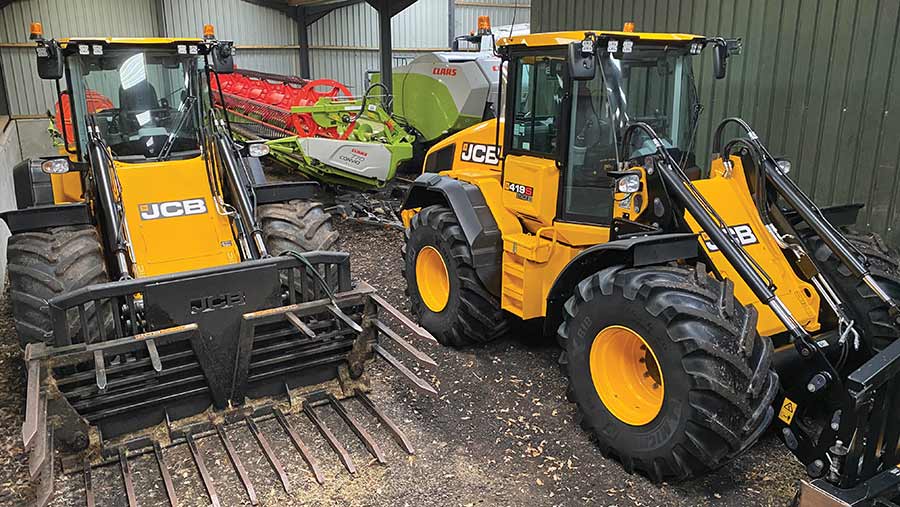
On the chopping block? The pair of 419 shovels could soon be replaced © MAG/Oliver Mark
Jim Watt runs a 2,500ha silage, slurry and arable contracting business in East Kilbride.

